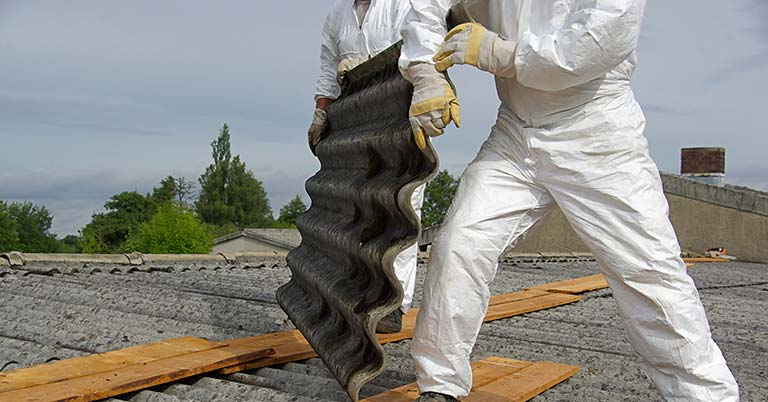
09
June 2024
By James
Category: Industry
Asbestos Surveys Are For Safety Compliance
Asbestos was once hailed as a "miracle mineral" due to its heat resistance, strength, and versatility. However, it is now known to pose severe health risks, including lung cancer, mesothelioma, and asbestosis, when its fibres are inhaled. As a result, asbestos has been banned or heavily regulated in many countries. In buildings constructed before these regulations were implemented, asbestos-containing materials (ACMs) are often still present. To manage these risks, an asbestos survey is essential. This blog will explore what an asbestos survey is, its importance, types, and the process involved.
What is an Asbestos Survey?
An asbestos survey is a systematic inspection conducted by a qualified professional to identify and assess the presence of asbestos-containing materials in a building. The primary objective is to prevent asbestos exposure by locating ACMs, evaluating their condition, and recommending appropriate management actions. The survey provides crucial information for property owners, employers, and contractors to ensure safety and compliance with health regulations.
Importance of Asbestos Surveys
The significance of asbestos surveys cannot be overstated. Here are some key reasons why they are crucial:
- Health and Safety: Asbestos fibres, when disturbed, can become airborne and pose serious health risks to occupants and workers. An asbestos survey helps prevent inadvertent exposure.
- Legal Compliance: Many countries have stringent regulations regarding asbestos management. An asbestos survey ensures compliance with these laws, avoiding potential legal consequences and fines.
- Property Value: Identifying and managing asbestos can protect or even enhance the value of a property by making it safer and more attractive to potential buyers.
- Informed Decision-Making: Survey results provide property owners and managers with the information needed to make informed decisions about renovations, demolitions, or maintenance work.
Types of Asbestos Surveys
There are three primary types of asbestos surveys, each suited to different situations and needs:
Management Survey:
- Purpose: To locate ACMs that could be disturbed during normal occupancy, including maintenance and installation work.
- Scope: Involves minor intrusive work and sampling to identify ACMs in accessible areas.
- Outcome: Provides a plan for managing asbestos in place, ensuring that materials remain in good condition and are regularly monitored.
Refurbishment and Demolition Survey:
- Purpose: Required before any refurbishment or demolition work to identify all ACMs that may be disturbed.
- Scope: Involves extensive intrusive work to access all areas, including behind walls and under floors.
- Outcome: Ensures safe removal or management of asbestos before any construction work begins, protecting workers and preventing contamination.
Re-inspection Survey:
- Purpose: Conducted on buildings with known ACMs to monitor their condition and ensure they remain safe.
- Scope: Involves a review of previously identified ACMs to assess their condition and update management plans.
- Outcome: Provides ongoing assurance of safety and compliance, addressing any deterioration or damage to ACMs.
The Asbestos Survey Process
Conducting an asbestos survey involves several key steps, each crucial for accurate identification and assessment of ACMs. Here’s a detailed look at the process:
Pre-Survey Preparation:
- Client Consultation: The surveyor meets with the client to understand the scope of the survey and gather background information about the building.
- Review of Existing Documentation: The surveyor reviews any existing asbestos records, building plans, and historical data to identify potential ACM locations.
Visual Inspection:
- Walkthrough: The surveyor conducts a thorough visual inspection of the building, noting any suspect materials and areas where ACMs are likely to be found.
- Access Planning: The surveyor plans how to access difficult-to-reach areas safely and effectively.
Sampling:
- Sample Collection: The surveyor collects samples of suspect materials using appropriate safety measures to avoid fibre release.
- Lab Analysis: Samples are sent to an accredited laboratory for analysis to confirm the presence and type of asbestos.
Assessment and Reporting:
- Condition Assessment: The surveyor assesses the condition of confirmed ACMs to determine the risk of fibre release.
- Documentation: The surveyor compiles a detailed report, including the location, type, condition, and extent of ACMs, along with photographic evidence and lab results.
- Recommendations: The report includes recommendations for managing or removing ACMs, prioritising actions based on the risk assessment.
Post-Survey Actions:
- Management Plan: Based on the survey report, a comprehensive asbestos management plan is developed, outlining steps to safely manage or remove ACMs.
- Communication: The survey findings and management plan are communicated to all relevant parties, including building occupants, maintenance staff, and contractors.
- Ongoing Monitoring: Regular re-inspections and monitoring are scheduled to ensure ACMs remain in safe condition.
Choosing a Qualified Asbestos Surveyor
Selecting a qualified and accredited asbestos surveyor is critical to ensure the accuracy and reliability of the survey. Here are some tips for choosing the right professional:
- Accreditation and Certification: Ensure the surveyor is accredited by a recognised body, such as the United Kingdom Accreditation Service (UKAS) in the UK and holds relevant certifications.
- Experience and Expertise: Look for surveyors with extensive experience and specialised knowledge in asbestos identification and management.
- References and Reviews: Check references and read reviews from previous clients to gauge the surveyor’s reputation and quality of work.
- Comprehensive Services: Choose a surveyor who offers a full range of services, including sampling, analysis, risk assessment, and management planning.
- Clear Reporting: Ensure the surveyor provides clear, detailed reports that are easy to understand and include practical recommendations.
Conclusion
An asbestos survey is a vital step in ensuring the safety, compliance, and value of your property. By identifying and managing asbestos-containing materials, you can prevent harmful exposure, adhere to legal requirements, and make informed decisions about property maintenance and renovations. Whether you need a management survey, refurbishment and demolition survey, or re-inspection survey, choosing a qualified professional is crucial to obtaining accurate and reliable results. Invest in an asbestos survey today to protect the health of occupants, workers, and your investment in your property.


